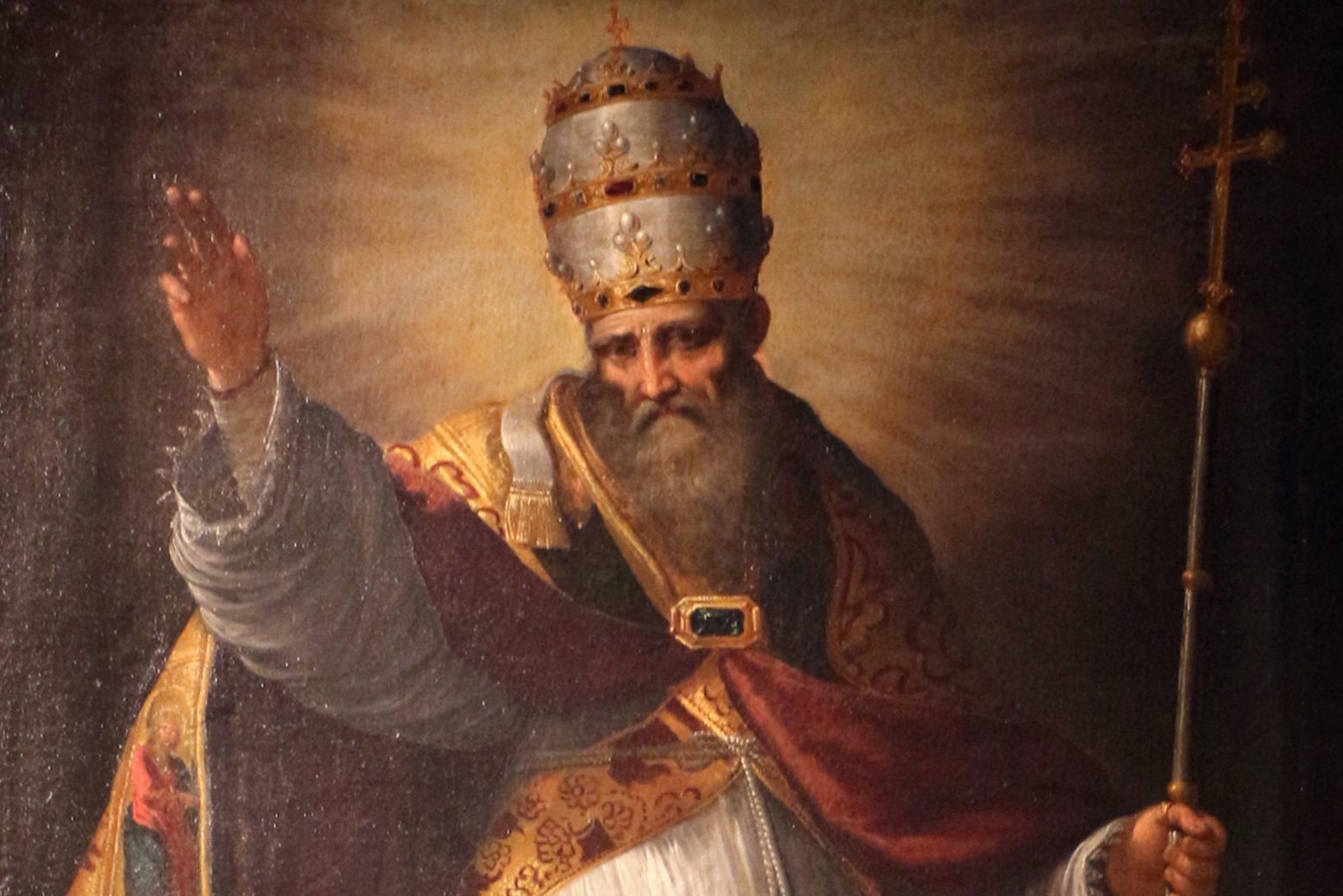
Saint Of The Day For December 31: Saint Sylvester I, Pope
Pope Saint Sylvester I ruled the Church wisely for twenty years at the time when Emperor Constantine built the first Roman basilicas and the Council of Nicaea acclaimed Christ the Son of God.
He died on 31 December 335 and was laid to rest in Rome in the cemetery of Priscilla.
Sylvester, Pope in freedom of worship
St Sylvester is the first Pope of a Church that no longer had to hide in the catacombs because of the threat of persecution in the early centuries.
In the year 313, in fact, when the African Miltiades was Pope, the emperors Constantine and Licinius gave full freedom of worship to Christians.
The following year, Silvester, a Roman priest, whose date of birth is unknown but who, according to the Liber Pontificalis, was the son of a certain Roman Rufinus, ascended the papal throne.
It was Sylvester who marked the transition from pagan Rome to Christian Rome and assisted in the construction of the great Constantinian basilicas.
Again according to the Liber Pontificalis, at the Pope’s suggestion, Constantine founded St Peter’s basilica on Vatican Hill, on top of a pre-existing temple dedicated to Apollo, burying the apostle’s body there.
Also thanks to the collaboration between Sylvester and Constantine, the Basilica and Baptistery of the Lateran were built near the former imperial palace where the Pontiff took up residence.
The Basilica of the Sessorium (Basilica of the Holy Cross in Jerusalem), and the Basilica of St Paul Outside the Walls.
The memory of Sylvester is, however, mainly linked to the church in titulus Equitii, named after a Roman priest who is said to have erected this church on his property.
It still stands near the Baths of Trajan next to the Domus Aurea.
Sylvester, Pope ‘confessor of the faith
Uncertain, however, was the role that Sylvester played at the negotiations on the Donatists at Arles and on Arianism at the first ecumenical council in history, held at Nicaea in 325.
According to some, he did not even have the opportunity to speak.
However, he must have impressed his contemporaries, so much so that, as soon as he died, he was immediately honoured publicly as ‘Confessor’.
Indeed, he is among the first to receive this title, attributed from the 4th century onwards to those who, even without martyrdom, had spent a life sacrificed for Christ.
No doubt the Pope also contributed to the development of the liturgy.
During his reign, the first Roman martyrology was probably written; similarly, the name of Sylvester is linked to the creation of the Roman school of singing.
St Sylvester and The Militia Aurata
St. Sylvester Pope is the patron saint of the chivalric order called Milizia Aurata or also ‘of the Golden Spur’, which tradition has it was even founded by Emperor Constantine I himself.
After various vicissitudes over the centuries, in 1841 Pope Gregory XVI, as part of a vast reform of the equestrian orders, separated the Order of St. Sylvester Pope from the Milizia Aurata, assigning it its own statutes and decorations.
In 1905 Pope Pius X made further changes, which are still in force.
The Order has four classes: Knight, Commander, Commander with plaque (Grand Officer), Knight Grand Cross.
Of the three equestrian orders governed by the Holy See, that of St. Sylvester is the lowest; the highest rank belongs to the Order Plan, followed by that of St. Gregory the Great.
Read Also:
Saint Of The Day For December 28: Holy Innocents, Martyrs
Saint Of The Day For December 27: Saint John, Apostle And Evangelist
Saint Of The Day For December 26: Saint Stephen, First Martier
Women And The Art Of Speech: Economy Of Francesco’s Solidarity With The Women Of Iran
8 December 1856: Lyon, SMA (African Missions Society) Is Founded
D.R. Congo: Congolese Catholics Take To The Streets To Protest Increasing Violence
DR Congo, They Were Organising A Peace March: Two Women Kidnapped In South Kivu
